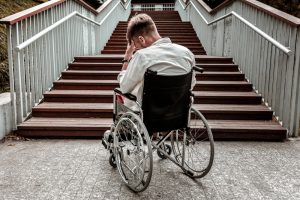Introduction: In the realm of inclusive education, the journey of disabled individuals unfolds as an odyssey, marked by challenges, resilience, and triumphs. As a seasoned advocate for inclusive learning, I’ve witnessed firsthand the transformative power of education in the lives of Disabled Peoples individuals. Join me as we navigate through their odyssey, shedding light on
Introduction:
In the realm of inclusive education, the journey of disabled individuals unfolds as an odyssey, marked by challenges, resilience, and triumphs. As a seasoned advocate for inclusive learning, I’ve witnessed firsthand the transformative power of education in the lives of Disabled Peoples individuals. Join me as we navigate through their odyssey, shedding light on the hurdles they face, the victories they celebrate, and the strides towards a truly inclusive educational landscape.
Understanding Inclusive Learning: Breaking Down Barriers
Inclusive learning goes beyond mere access to education; it embodies the ethos of diversity, equity, and inclusion. It encompasses creating environments where all individuals, regardless of their abilities, feel valued, respected, and empowered to learn. By dismantling physical, social, and attitudinal barriers, inclusive learning fosters a culture of belonging and celebrates the unique strengths of every learner.
Challenges for people with disabilities

Image by:stronggo.com
Access to education remains a paramount challenge for Disabled Peoples individuals, with barriers ranging from physical infrastructure to digital resources. Lack of ramps, inaccessible websites, and limited provision of assistive technologies hinder their participation and engagement in learning. Addressing these challenges requires a comprehensive approach that involves policy reforms, infrastructure adaptations, and technological innovations.
Empowering Through Assistive Technologies for Disabled Peoples
Assistive technologies serve as powerful enablers in the journey towards inclusive learning. From screen readers to braille displays, these tools empower disabled individuals to access information, communicate effectively, and participate actively in educational activities. By embracing assistive technologies, educational institutions can level the playing field and create equitable learning opportunities for all learners.
Fostering a Culture of Inclusion: Beyond Disabled Peoples
True inclusivity extends beyond mere accommodation; it requires a paradigm shift in attitudes, practices, and policies within educational institutions. Cultivating a culture of inclusion entails promoting awareness, embracing diversity, and valuing the contributions of every individual. By fostering an inclusive ethos, educational communities can nurture a supportive environment where all learners thrive and succeed.
Real-Life Experiences with Disabled Peoples
Amidst the challenges and triumphs of inclusive learning, the voices of disabled individuals resonate profoundly. Their lived experiences offer invaluable insights into the joys, struggles, and aspirations entwined in their educational journey. By amplifying their voices, we gain a deeper understanding of the systemic barriers they face and the transformative impact of inclusive education on their lives.
Key Points Summary Table:
| Key Points | Description |
|---|---|
| Understanding Inclusive Learning | Embodies diversity, equity, and inclusion in education. |
| Challenges of Accessibility | Physical, digital, and attitudinal barriers hinder access. |
| Assistive Technologies | Empower disabled individuals in accessing information and learning. |
| Fostering a Culture of Inclusion | Requires a shift in attitudes and practices within educational institutions. |
| Voices from the Odyssey | Real-life experiences offer insights into the journey of disabled individuals in education. |
Comparative Table:
| Features | Inclusive Learning | Traditional Education |
|---|---|---|
| Accessibility | Addresses diverse needs of learners. | Limited accommodations for disabled individuals. |
| Diversity and Inclusion | Celebrates uniqueness of every learner. | Homogeneous approach to education. |
| Empowerment | Fosters independence and self-advocacy. | Relies on external support and accommodations. |
| Community Engagement | Promotes collaboration and mutual support. | Emphasizes individual achievement. |
| Educational Outcomes | Enhances learning outcomes for all learners. | May overlook diverse learning needs. |
Conclusion:
The odyssey of disabled individuals in education is marked by resilience, determination, and the pursuit of inclusion. As we embark on this journey, let us commit to breaking down barriers, amplifying voices, and fostering a culture where every individual is valued and empowered to learn. Together, we can navigate towards a brighter horizon of inclusive learning, where diversity is celebrated, and all learners have the opportunity to thrive.
















